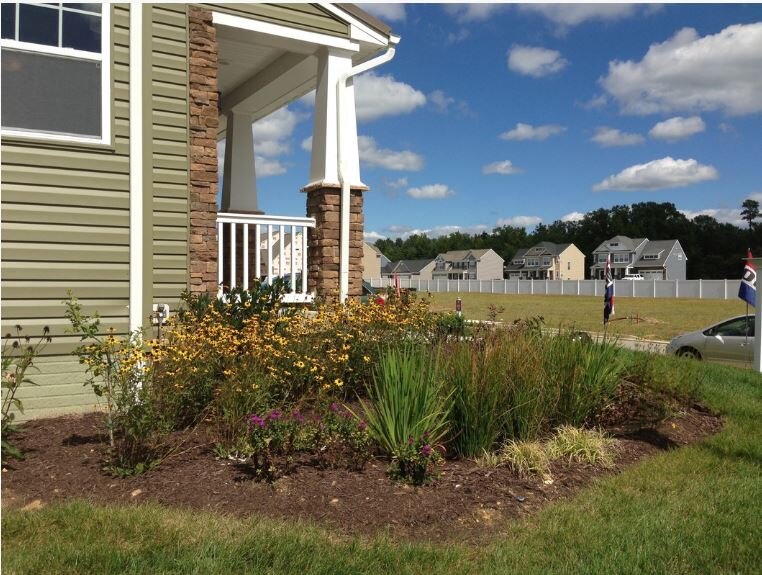Planning for New Residents in the St. Mary’s River Watershed
Rain garden by a LID model home in the St. Mary’s River Watershed
The addition of 17,00 new residents over the coming decade represents significant growth and development in the St. Mary’s River watershed. The additional environmental inputs from the new developments could overwhelm the stream’s ability to process nutrients and trap sediment. The St. Mary’s River is currently in good condition, but without careful development it could become the source of net export of sediment and nutrients to the Chesapeake Bay.
To protect the St. Mary’s River watershed, it is critical to have the effective adoption of low impact development (LID) and green infrastructure practices, including rain gardens, rain barrels, low impact lawn care, lawn conversion, and underground rainwater capture. An engaged, knowledgeable public is also essential for participating in, maintaining, and advocating for LID practices that protect the watershed.


